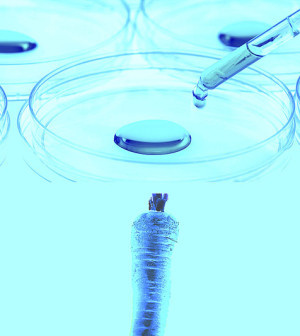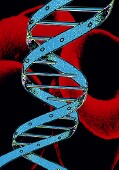- Double Mastectomy May Offer No Survival Benefit to Women With Breast Cancer
- Toxic Lead Found in Cinnamon Product, FDA Says
- Certain Abbott Blood Sugar Monitors May Give Incorrect Readings
- Athletes Can Expect High Ozone, Pollen Counts for Paris Olympics
- Fake Oxycontin Pills Widespread and Potentially Deadly: Report
- Shingles Vaccine Could Lower Dementia Risk
- Your Odds for Accidental Gun Death Rise Greatly in Certain States
- Kids From Poorer Families Less Likely to Survive Cancer
- Tough Workouts Won’t Trigger Cardiac Arrest in Folks With Long QT Syndrome
- At-Home Colon Cancer Test Can Save Lives
Researchers Say They’ve Found New Clues to Autism


A genetic mutation that increases the risk for a certain form of autism and causes specific physical traits and symptoms has been identified by researchers.
The finding may eventually enable doctors to do pre-birth testing for the CHD8 gene mutation in order to identify babies who are at risk for autism, according to the study authors.
“This is a big leap forward in our insight into the causes of autism,” study leader Dr. Raphael Bernier, clinical director of the Autism Center at Seattle Children’s Hospital and associate professor at the University of Washington, said in a hospital news release.
“It’s possible we may be able to look at features in utero and determine a higher risk of autism, possibly even early detection,” he added.
The findings were published July 3 in the journal Cell.
Early detection of autism — a neurodevelopmental disorder — is critical in treating the disorder. Previous research suggests that beginning treatment when children are just a few months old can lessen or even prevent autism symptoms from developing, the researchers said. Autism is characterized by impaired communication and social skills.
“We know that if we can intervene by 3 or 6 months of age instead of later in life, we can help the child learn important social communication skills, like eye contact,” Bernier said in the news release.
Bernier and his colleagues looked at more than 6,000 children with autism and found that 15 had a CHD8 gene mutation. All 15 of those children had similar physical characteristics — such as larger heads and prominent foreheads — and symptoms such as sleep disturbances, constipation and other gastrointestinal problems.
“For years, parents of children with autism have been telling us the gastrointestinal symptoms are real, but science has been slow to respond. Now, we have clear evidence that in a subgroup of individuals with autism, both the autism symptoms and constipation are a result of the CHD8 disruptions,” Bernier said.
“Children with autism are incredibly diverse so we must determine the genetic causes of different subtypes to find effective treatments,” he said.
More information
The U.S. National Library of Medicine has more about autism.
Source: HealthDay
Copyright © 2024 HealthDay. All rights reserved.










